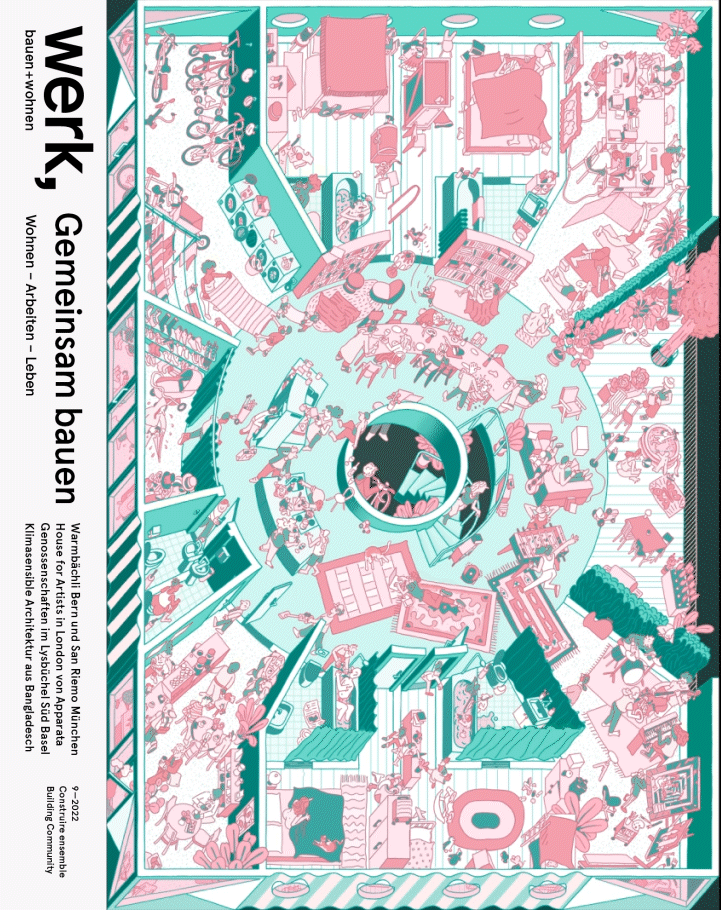werk, bauen + wohnen 9 – 2022

Anti-Monopoly
“How will we live together?” was the motto of the last Venice Biennale Architettura. Reflecting the spirit of our times, many of those who took part answered this question in a very fundamental way: How can we live with birds, server clusters and moulds? Far fewer offered an swers that impact on our daily lives. In fact, only one group reported about a successful path to coexistence. Rather than utopias, Anne Kockelkorn, Susanne Schindler, and MarieAnne Lerjen presented the historical, social, and economic backgrounds to Zurich’s culture of cooperative building. We have regularly report ed on these housing projects (see Zollhaus Zürich in wbw 11–2021 or Hobelwerk Winterthur in wbw 7/8–2022).
But what about communal housing models outside Zurich? What is happening in Bern, Basel, Munich, or London? That is, in places where the economic pressure is not yet quite so great (apart from the examples from abroad!), where there are niches, where land is still availa ble (on the periphery) — and does not always go to the highest bidder. We are interested in examples that differ clearly from the familiar cooperative groove about laundry room regulations and domestic comfort. Young communities are searching for ways of trying out — and living — coexistence in densely built areas, taking account of sustainability, on land that is in short supply. The background here is a sense of conviction, the wish to express one’s own ideas of the good life, and to create affordable living space in the city.
While these fortunate and exceptional cases can only serve to a limited extent as models for the broader area of housing, they still all tell us about a city that functions rather differently than in the ways presented by conventional project development. All of them are architecturally remarkable and prove that today social form also needs an image, a form of architectural expression that can be communicated when looking for funds, at purchasing negotiations and when talking to public authorities.
With the right client architecture also con tributes to the social aspect and leads to previously unimaginable solutions and life plans — but which are possible and which work, as this issue shows. — Tibor Joanelly, Jenny Keller